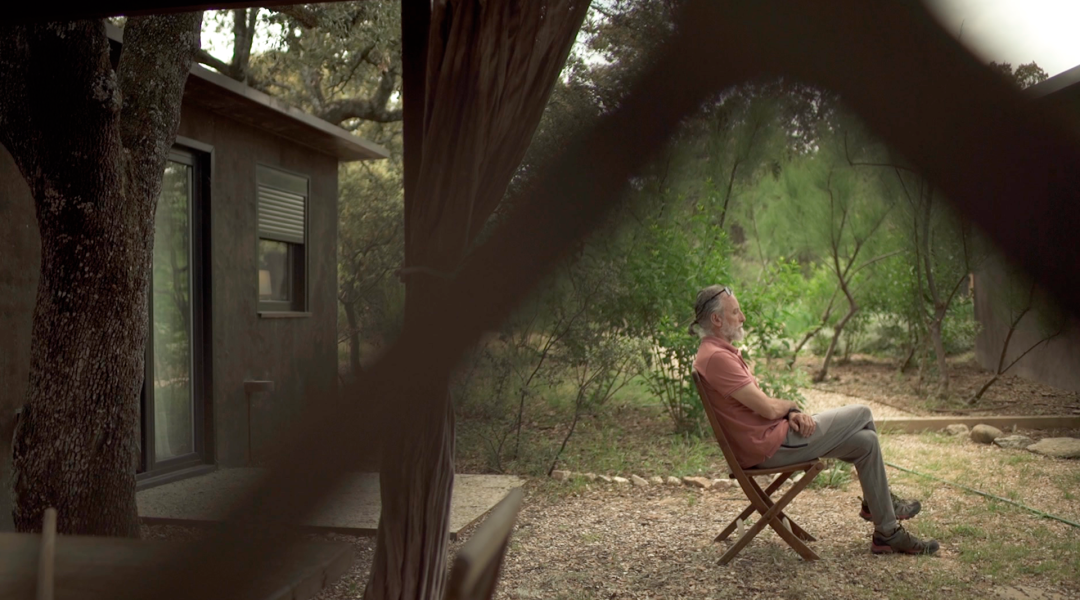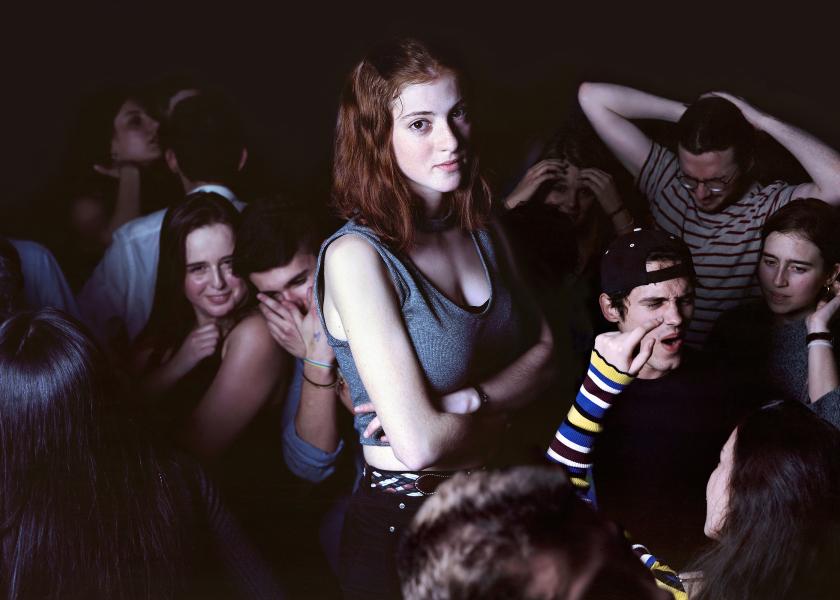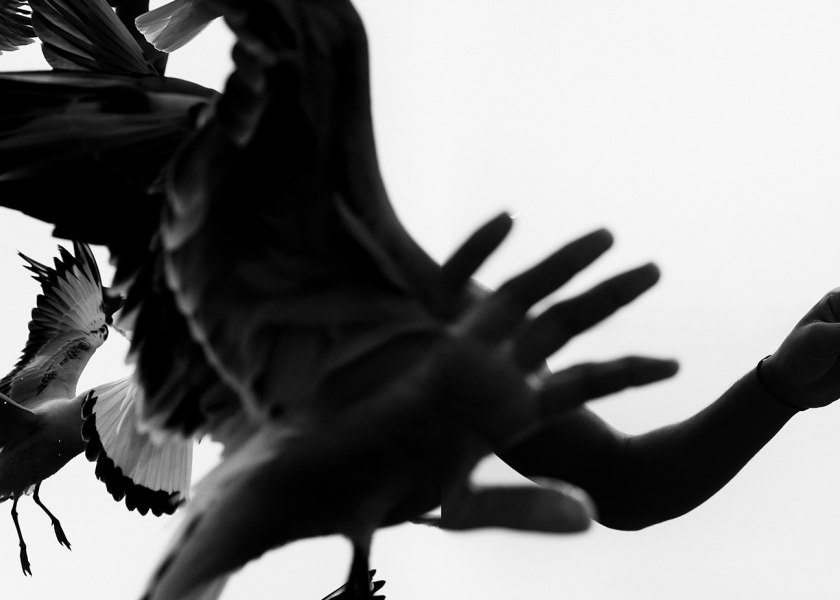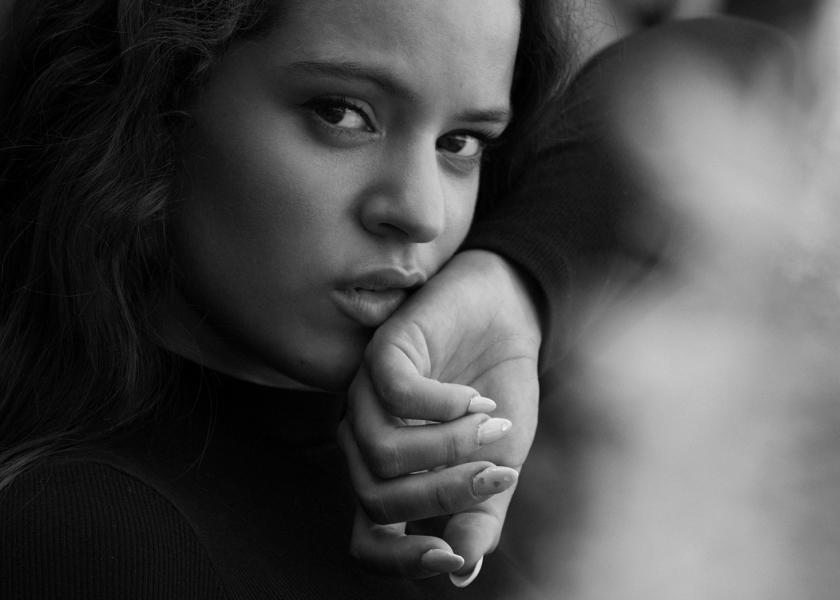Javier Vallhonrat
“When You Stop, Much More Happens”

The artistic career of Javier Vallhonrat has evolved and transformed itself from the workshops of fashion greats to the loneliness of a mountain tent. The artist behind 'The Incised Shadow', on show at PHotoESPAÑA 2019, says the profound reflection pervading his work was developed with tools that are much more basic and essential than a camera or an objective—time, silence, and intuition.
He welcomes us to his house, hidden among oaks and bushes. Leading us along gravel paths to a small workshop, he says the first thing he did before building it was to ask permission to the land because he didn’t want to uproot any trees. A cat sticks out its head cautiously and Javier's face lights up. Suddenly, we understand. Javier's passion for nature goes far beyond respect or aesthetic fascination. It has to do with feeling an indissoluble part of it, with understanding that we all are one: the tree, the cat, the glacier...
The Pyrenean glacier of the Maladeta, the mysterious hero of The Incised Shadow, the highlight exhibition kicking off PHotoESPAÑA 2019, is also a "living being" suffering and bleeding before Javier Vallhonrat’s respectful and loving eyes.
"It's as if you were watching a dying beached whale. The glacier awakens feelings of reverence, awe and tenderness in me, but also feelings of rage and impotence because of our indifference to what is happening and the impunity for the serious damage we are causing to the environment, that is, to us. This is what encouraged me to carry out this project.”
But The Incised Shadow isn’t just a document to warn against climate change: "If the Maladeta glacier didn’t trigger any artistic thoughts in me, I would do nothing with it.”
Dwelling and Photographing
Javier Vallhonrat has camped next to the it for several years, when the snow melts in summer, revealing the surface. For almost a month, he sleeps there and photographs things like bergschrunds—crevasses forming when the ice separates from the rock.
“Part of the project entails dwelling at the border of a glacier in a mountain tent turned into a dark room. A team of very adventure-minded seamstresses created a replica of the tent using a more opaque fabric.” With the zippers closed, he fits a homemade box shielding the camera lens in a slit made in the tent. Inside it’s all dark. Javier projects the image captured on a translucent plate, and when he has the right image, he places an light-sensitive film and shoots.
“The idea was to be able to remain inside my camera-tent and take photographs from there. I didn’t want to be the kind of photographer who gets someplace, looks, shoots and leaves. I wanted to be someone who stays and keeps company and listens for longer to forge a symbolic relationship with the glacier.” More than symbolic, his relationship with the glacier has become physical, intimate, almost mystical, to the point that he and his wife are planning to move nearby for good in the coming months.
A Bird’s Eye View of the Glacier
Another highlight of the The Incised Shadow is 53. Profile, a piece comprising 53 photographs taken from a plane, fragments of the glacier that together make up its complete physiognomy. Vallhonrat is very interested in the idea of fragment and context: “I was so scared I spent half my energy feeling grateful for surviving a 4,500 flight with an open methacrylate dome so I could look out and photograph... But beauty is indescribable.”
Once again, his intention goes beyond the purely aesthetic: “In addition to seeing the glacier in full context, I wanted to show that the idea of understanding things in all their complexity and wholeness is just another human fantasy.”
In that solitary, silent retreat imposed by his artistic commitment to the Maladeta glacier, he sometimes fantasises about the possibility that the few visitors he encounters—a butterfly, a spider—come to see him. “Going to the high mountain is always an inner journey. It makes you aware of your own limits. You learn very basic yet very deep things."
Stop For Things To Happen
Inaction and silence are his great allies. He feels physically and emotionally unattached from his dizzying years as a fashion photographer, during which he made covers for international Vogue editions, collaborated with the likes of Yves Saint Laurent, Lancôme and Shiseido, and worked alongside creators such as Sybilla, John Galliano, and Christian Lacroix: “I was a freak in the fashion world, I always have been. I knew my life was something else.” For Javier, fashion made sense in a very specific time of his life, when success, which reached him at a very young age, opened very interesting possibilities for him to experiment and research with great freedom. But he was always clear that his priority was to have more time: “When you stop, much more happens. That is the paradox.”
Vallhonrat is aware of the fact that society, and contemporary photography in particular, are moving in the opposite direction: “We devour more things in less time.” Social networks play a decisive role in this compulsive generation of content. “Although they sometimes bring about interesting phenomena and elicit stimulating reflections, the voracious consumption of images is detrimental to the revealing meaning of artistic creation.” But there is always room for reflection: “Currently, there is a very strong movement in photography that is returning to large-format, analogical cameras because that kind of photography encourages closer attention and thought. There is also a search for purpose in this.”
From his relationship with fashion, Javier Vallhonrat retains the discipline and the rigour, which he reveals in his gait, in how he handles the camera or turns the pages of his notebooks.
The Power of Intuition
His years of teaching in schools like Efti allowed him to witness a great qualitative leap between the students of his generation and today’s students: “In my time we didn’t have a theoretical corpus of photography nor teachers maintaining a direct dialogue with contemporary artistic creation. Photography lived in a ghetto.” Today teachers are birthing a generation of photographers with great artistic potential.
But to make the most of talent, it is important to pay attention to sensations. “I’m not into giving advice but I like inviting people to live experiences. I encourage my students to find inspiration in the contact with the body and to use it as a resonance chamber at the service of intuition.” The key lies in recovering a kind of intuitive thinking that also integrates scientific and rational thinking. To Vallhonrat, intuition provides us with unmatched knowledge and sensitivity.
The wind rocks the trees from time to time, some insects flutter around and the fields anticipate the smells of the approaching summer. Without realizing it, we have also fused with the calm environment. Perhaps, after having shared these moments with the artist and seen the glacier with him, we will also be able to see and understand more. It is quite possible, dear Javier, that butterfly did come to see you.
Artist and photographer Javier Vallhonrat Ghezzi is a Bachelor of Fine Arts, Bachelor of Psychology, Gestalt Therapist and holds a Master in Integrative Humanistic Psychotherapy.
From his teaching activity in public and private institutions around the world, he highlights his work at Efti (International Centre for Photography and Film) as director and teacher of the course Creativity and Strategies in Contemporary Photography, as well as of the International Master of Photography and Project Management. He has also taught at the Faculty of Fine Arts of Cuenca. Vallhonrat was awarded the National Photography Prize (1995), the Bartolomé Ros PHotoESPAÑA Award (2007), the Community of Madrid Culture in Plastic Arts Prize (2010) and the 2018 Lifetime Achievement Photography Prize awarded by the ENAIRE Foundation. His work is on show at Reina Sofia Museum in Madrid, the Grand Duc Jean in Luxembourg and the Philadelphia Museum of Modern Art, among others.


